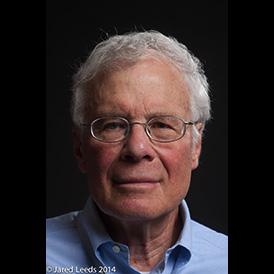
Email:
Office:
Phone:
Administrative Assistant:
Courses:
Research-at-a-glance:
Affiliations:
Biography:
Dr. Lodish received his A.B. degree Summa Cum Laude in Chemistry and Mathematics from Kenyon College in 1962 and his Ph.D. degree in genetics from the Rockefeller University in 1966. Following two years of postdoctoral research at the M.R.C. Laboratory of Molecular Biology with Drs. Sydney Brenner and Francis Crick, he joined the faculty of the MIT Department of Biology. He was promoted to Professor in 1976, and in 1983 was appointed Founding Member of the new Whitehead Institute for Biomedical Research. In 1999 he also became Professor of Biological Engineering in the new MIT Department of Biological Engineering.
He was elected a fellow of the American Association for the Advancement of Science in 1986, a member of the National Academy of Sciences in 1987, and a fellow of the American Academy of Arts and Sciences in 1999. He is a member of the Board of Trustees of Boston Children's Hospital, where he chairs the Board Research Committee. He is also the lead author of the textbook Molecular Cell Biology; the seventh edition was published in April 2012. During the 2004 calendar year he served as President of the American Society for Cell Biology. Dr. Lodish was a founder and scientific advisory board member of several biotech companies including Genzyme, Inc. and Millennium Pharmaceuticals. Since 2007 he has been the Founding Chair of the Scientific Advisory Board of the Massachusetts Life Sciences Center, the group charged with oversight of the state's 10- year $1 billion investment in the life sciences.
Over 170 MD, PhD, and MD/PhD students and fellows have trained in his laboratory; two of his trainees have received the Nobel Prize and six have been elected to the US National Academy of Sciences or the Institutes of Medicine.
Research:
In 1988, the Lodish laboratory accomplished pioneering work on erythropoietin (Epo), the hormone that controls the production of red blood cells; the group identified and cloned the Epo receptor. This has led to a long and ongoing set of projects on the activation of and signal transduction by the erythropoietin receptor in erythroid progenitor cells, and the regulation of gene expression, apoptosis, and cell division during red cell formation.
Currently they are characterizing many novel genes that are important for terminal stages of erythropoiesis, including chromatin condensation and enucleation. Other work focuses on the regulation of self- renewal, proliferation and differentiation of early (BFU-E) erythroid progenitor cells by extracellular signals including glucocorticoids and oxygen. This has led to the identification and characterization of several molecules, including six that are FDA-approved drugs for other indications, that show great promise as therapeutics for bone marrow failure disorders and erythropoietin- resistant anemias. This research involves extensive computational analyses of large datasets of gene expression profiles and chromatin modifications generated from cells at different stages of human and mouse red cell development.
This research has led to the identification of may long non-coding RNAs (LncRNAs) that are specifically expressed in developing red blood cells and that regulate important aspects of their development, including cell death. Many remain in the nucleus, regulate expression of nearby genes, and appear to modify chromatin segments; these LncRNAs are a major current subject of lab research. Recently they identified and are characterizing lncRNAs specifically expressed in developing brown and white adipocytes and that are required for formation of these fat cells. Understanding the roles of these non-coding RNAs in health and in diseases such as diabetes are ongoing projects in the lab.
Red blood cells are attractive vehicles for the introduction of novel therapeutics, immunomodulatory agents, and diagnostic imaging probes into the human body: They have a lifespan of 120 days and contain no DNA; any genes introduced into red cell precursors will no longer be present in the enucleated red cells introduced into a recipient. A large DARPA- supported project, in collaboration with Prof. Hidde Ploegh, involves the generation of human red blood cells in culture that have on their surface monoclonal antibodies that can inactivate a variety of toxic substances, or receptors that can bind and remove unwanted materials from the blood. Gene- modified red cells can be targeted to specific sites in the vasculature where they can deliver drugs or reagents or serve as imaging modalities.


